Traditional Polish foods are hearty and filling, but also healthy and nourishing, uncomplicated and delicious. They include comfort foods such as dumplings, but also soups, stews and fantastic salads (which may surprise some), simple and using traditional ingredients, which have withstood the test of time.
This post explores some of the most popular, best loved, traditional Polish dishes including breakfasts, snacks, soups, salads, mains and desserts (a total of 28 recipes).
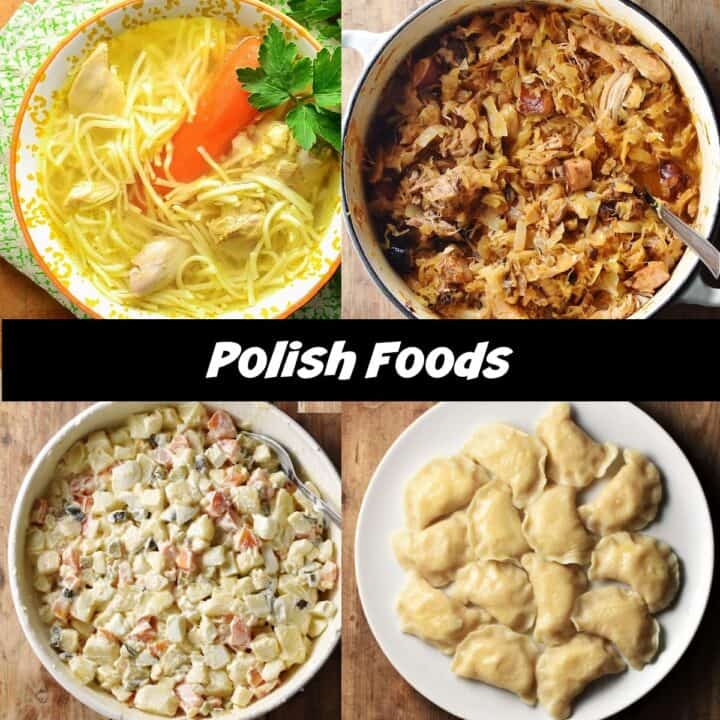
What makes traditional Polish foods unique
- Simple ingredients
Traditional Polish food is built around simple ingredients which have been used in ingenious ways to create dishes that are a testament to the resourcefulness of the Polish people and their love of great food.
- Grains and potatoes
There is an emphasis on grains, potatoes and simple vegetables, which traditionally were the main sources of food in Polish countryside. Hence the popularity of all manner of dumplings (pierogi and beyond), many of which are region specific.
- Soups
And soups! Soups in Poland are very important and have always been an integral part of daily meals.
- Seasonal dishes
Seasonality also plays a significant role in traditional Polish cooking. For example, kohlrabi soup is only made in the spring when kohlrabi is in season. As a child I remember blueberry pierogi being a summertime treat when wild blueberries (or bilberries, not farmed blueberries you can buy all year round) were in season.
Even some pastry shops (‘cukiernie’ in Polish) to this day offer seasonal menus with traditional blueberry filled buns, ‘jagodzianki’ (again, made with bilberries) being sold only in the summer.
- Fermented/pickled foods
Many Polish foods are fermented or pickled, which in the past was a way of preserving foods to enjoy over several months. The most famous fermented Polish food is sauerkraut (‘kapusta kiszona’), but there are others, such as cucumbers (used to make dill pickle soup) and beets.
Polish traditional pickled foods also include various other vegetables, such as zucchini, squash as well as mushrooms and even salads (Polish stores usually offer a good selection of these).
Most popular ingredients in traditional Polish cuisine
- Beets: the star ingredient of Polish barszcz soup, beets are also added to salads, condiments or turned into side dishes served hot (see recipes below).
- Potatoes: essential in a huge number of recipes including pierogi, pancakes and dumplings, as well as the most popular side dish served with main meals.
- Wild mushrooms: these include porcini, but also other types of wild mushrooms, which are added to soups, stews, made into sauces, and are the main ingredient of Polish uszka dumplings (which are served in barszcz).
- Sour cream: served with pierogi and various other dumplings, but also added to stews, salads as well as soups (a vast majority of them!).
- Twaróg: this curd cheese (also called ‘biały ser’, meaning ‘white cheese’ in Polish) is eaten for breakfast, lunch and dinner and forms the basis of many of the most popular Polish dishes, including pierogi, crepes as well as cheesecake (see recipes below).
- Kiełbasa: Polish sausage (most of the time smoked) comes in many flavours and is served both cold and hot. Poles love to barbecue it in the summer, add it to stews, casseroles, sandwiches or serve as an appetizer.
- Root vegetables: these hearty vegetables, including carrots, parsley root and celeriac, are used in traditional soups (practically all of them), but are also served in their raw form in delicious and diverse Polish coleslaws (more on that below).
I have divided popular traditional Polish foods into the following categories:
Iconic Polish foods
1. Pierogi ruskie.
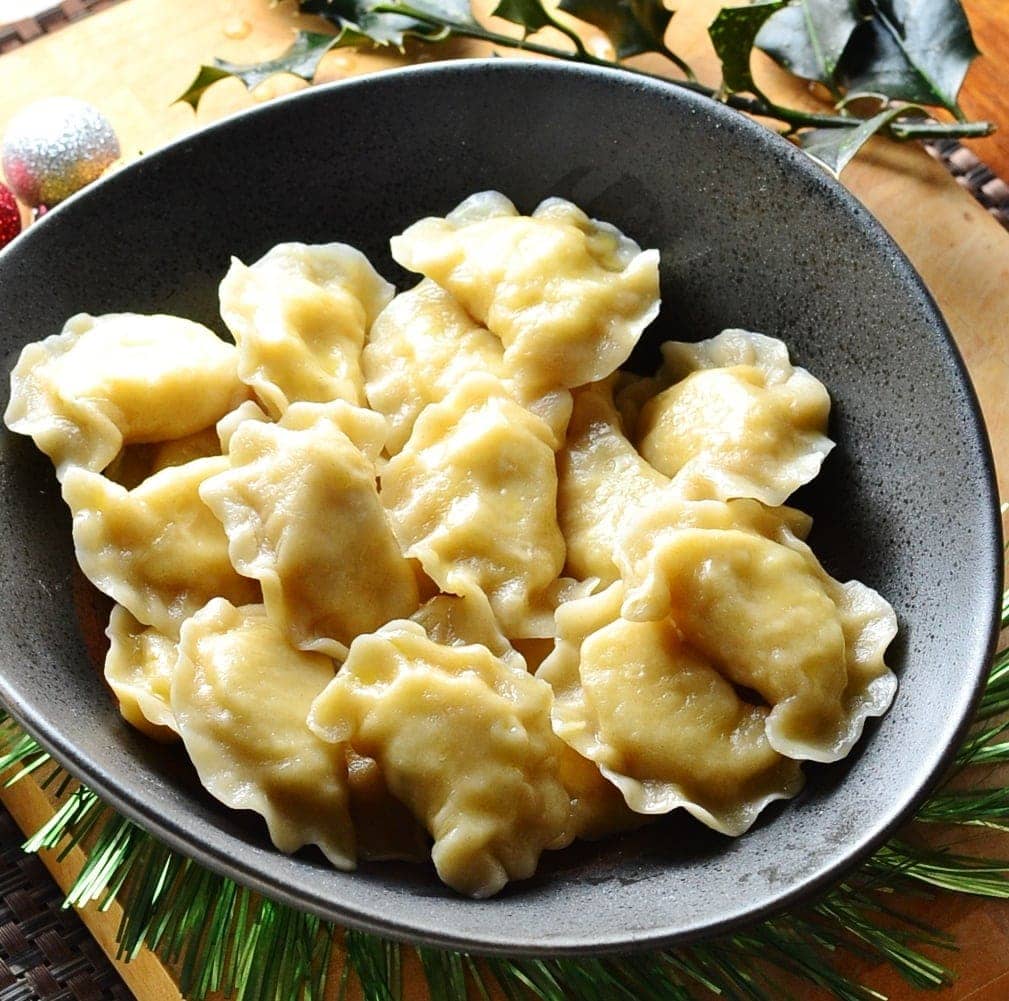
Pierogi are dumplings made with unleavened dough wrapped around a savoury or sweet filling, in this case potato and Polish twaróg curd cheese (savoury). They are boiled (all pierogi are) and served with fried onion and/or bacon and sour cream.
Twaróg is also used to make sweet cheese pierogi.
2. Bigos - sauerkraut stew.
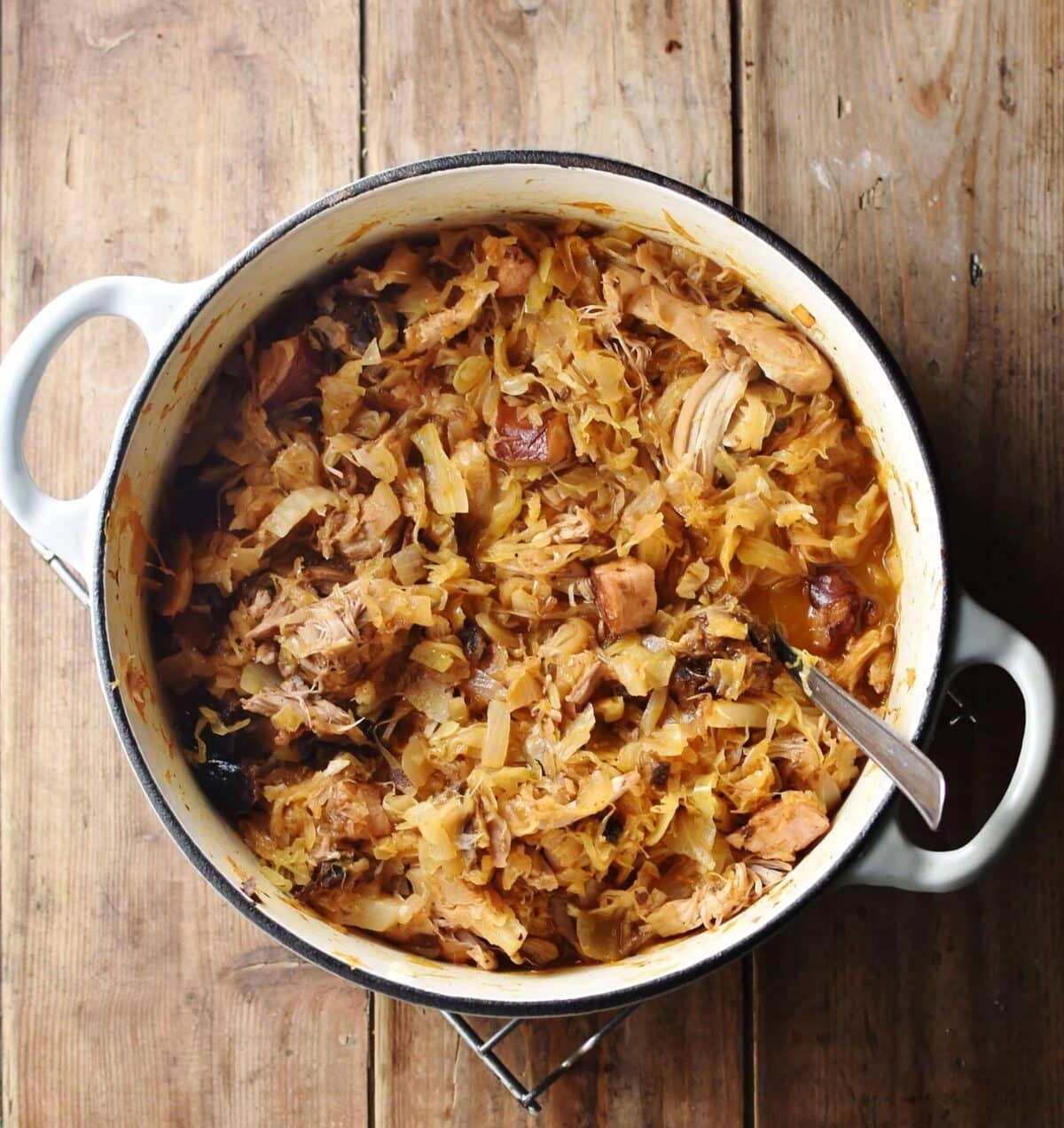
Making Polish bigos involves stewing sauerkraut, white cabbage, meat, sausage and wild mushrooms along with a handful of spices for a hearty, delicious dish. Bigos stew traditionally accompanied celebrations and gatherings but is often served also as a simple meal with boiled potatoes.
A vegetarian version of bigos is sometimes served at Polish Christmas Eve Wigilia.
3. Gołąbki - cabbage rolls.
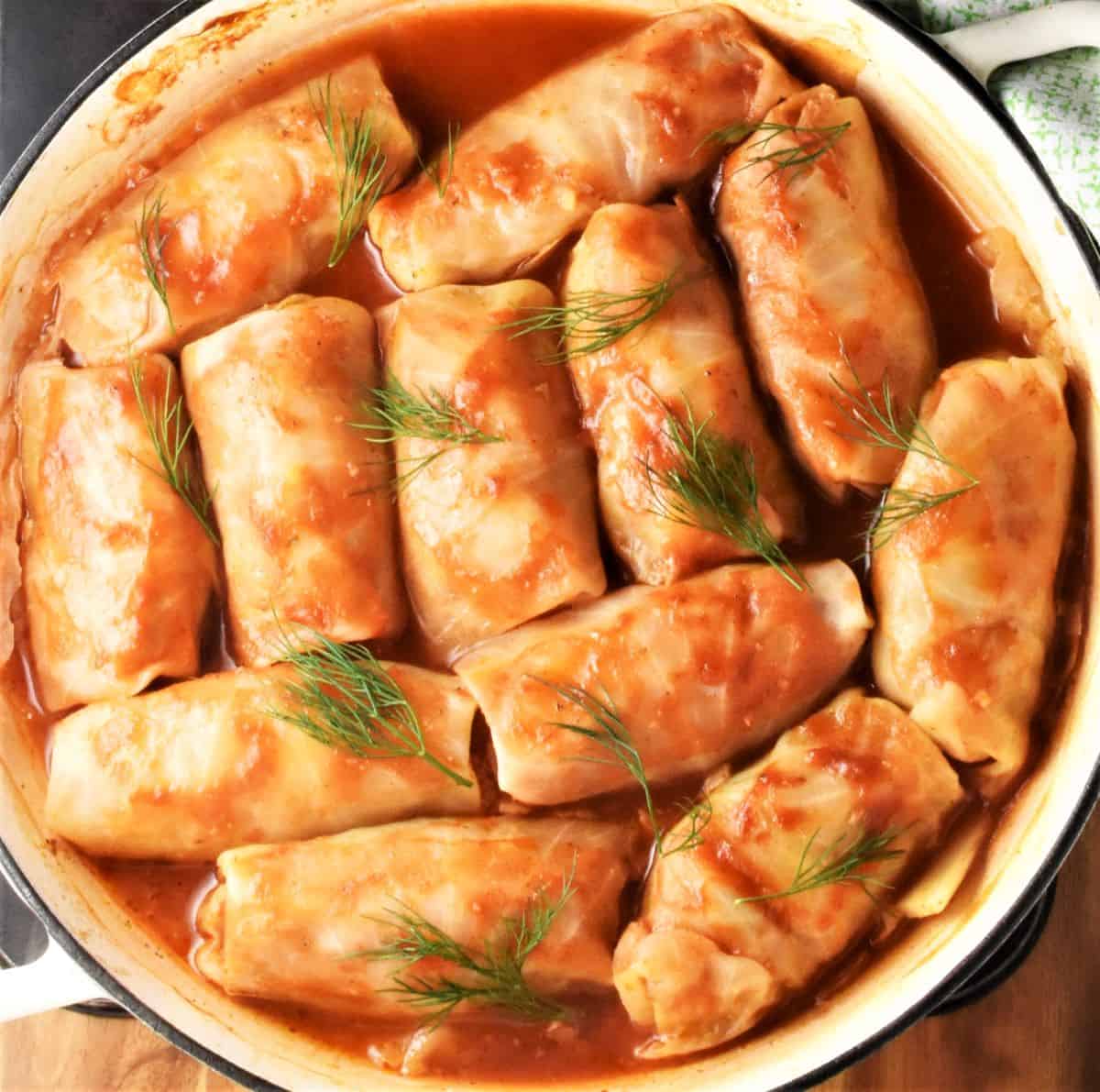
These are soft cabbage leaves wrapped around a meat-and-rice filling and cooked either in a tomato or mushroom sauce, or simply in stock.
Variations of this dish include meat-only cabbage rolls, or vegetarian gołąbki, which can be made with different grains, including buckwheat.
Polish breakfast food
Traditional Polish breakfast tends to be savoury rather than sweet (although many Polish hotel menus would have you believe it’s also pancakes and cakes). The dishes are filling, including protein-rich ingredients such as eggs, twaróg cheese or German-style wieners/frankfurters called parówki, boiled and served with mustard.
Bread is a must at breakfast and traditionally it's either rye or sourdough as well as Austrian-style crusty rolls called ‘kajzerki’.
4. Jajecznica - scrambled eggs.
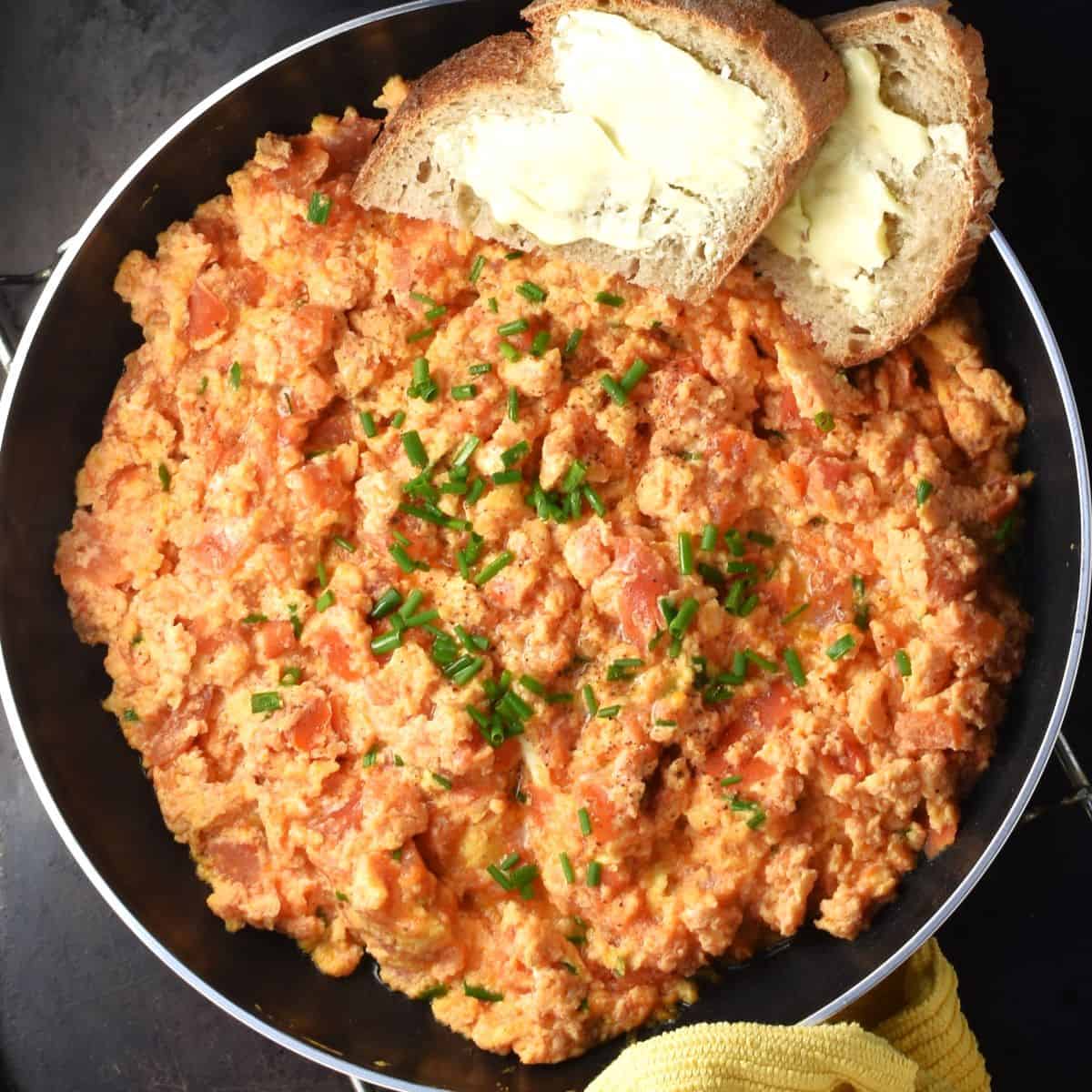
Polish scrambled eggs sometimes contain additional ingredients, such as tomatoes, onion, bacon or kiełbasa.
Recipe for scrambled eggs with tomatoes
5. Gzik - curd cheese dip.
Also called ‘twarożek’, this dish combines twaróg curd cheese with chopped/shredded radishes, chives, sometimes also dill, a little sour cream to loosen the consistency of naturally dense twaróg and is served as a bread topping.
Another traditional breakfast offering, a little forgotten today, is kasza manna and various other ‘zupy mleczne’ (‘milk soups’) made with oats, rice or noodles.
Soups
Traditional Polish soups tend to be chunky rather than creamy (with some exceptions including pumpkin soup) and often contain a mixture of vegetables, grains and sometimes meat. Some of the most popular ones include:
6. Barszcz - Polish beet soup.

Polish barszcz soup is a clear beet broth, slightly sour, sweet, earthy and peppery, with a hint of garlic and wild mushrooms. It’s one of 12 traditional Polish Wigilia foods (served with uszka dumplings) but many people also make it throughout the year and serve with krokiety.
An alternative Christmas soup is wild mushroom soup served with Polish pasta called łazanki, popular in central and northern parts of Poland.
7. Rosół - chicken noodle soup.

Polish chicken noodle soup is made by boiling chicken thighs or legs in a vegetable broth and served with thin noodles or small pasta shapes. Growing up this was an obligatory ‘Sunday soup’ for many families, including my own.
8. Żurek - sour rye soup.
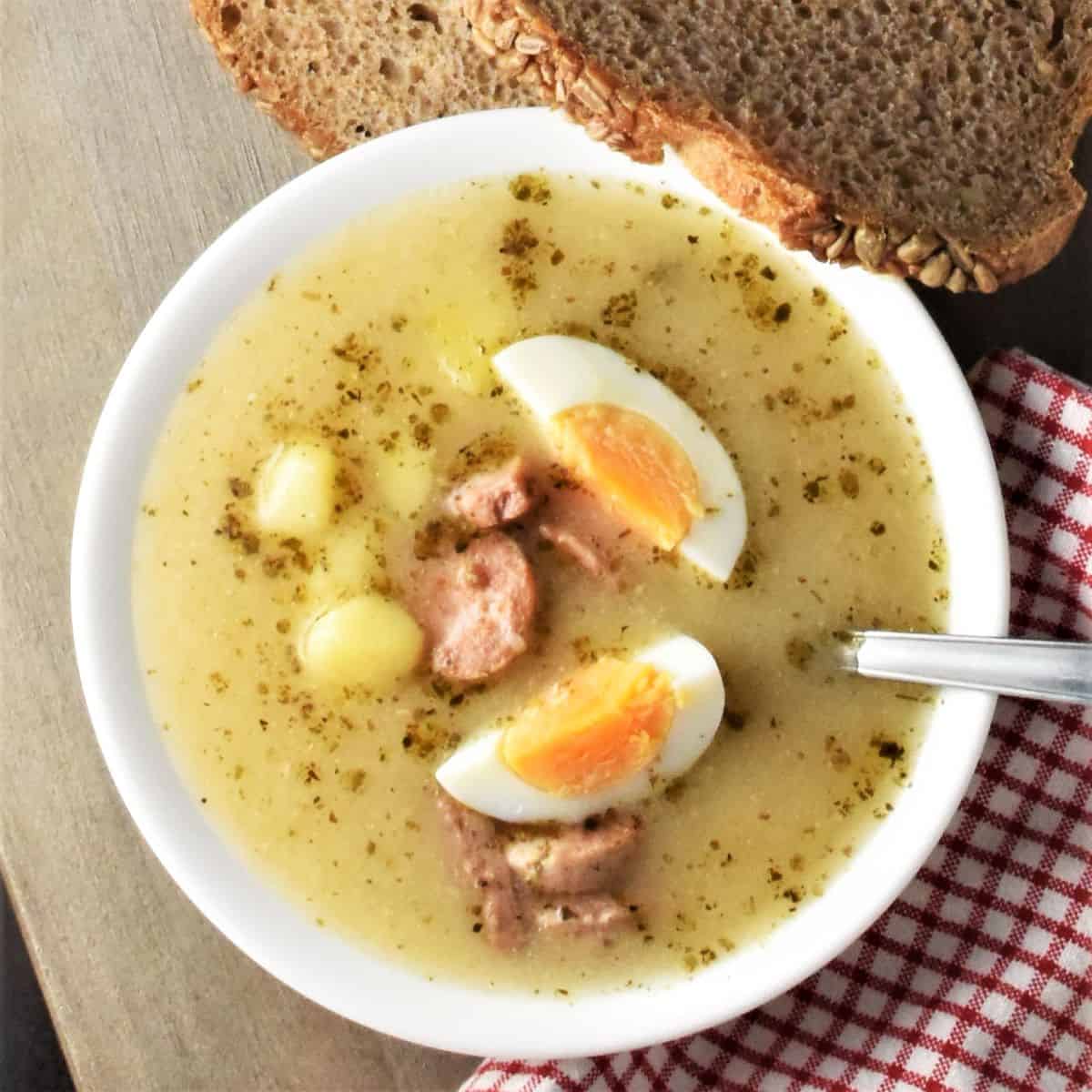
Made with a fermented rye (or wheat) ‘zakwas’ starter this hearty, sour tasting soup contains potatoes, ‘white’ (unsmoked) kiełbasa and hard-boiled eggs. It’s served at Easter but is often also enjoyed as an everyday dish. If you order this soup in a restaurant in Poland there is a high chance it will be served in a hollowed-out loaf of round bread (this doesn’t happen in people’s homes).
9. Kapuśniak - sauerkraut soup.
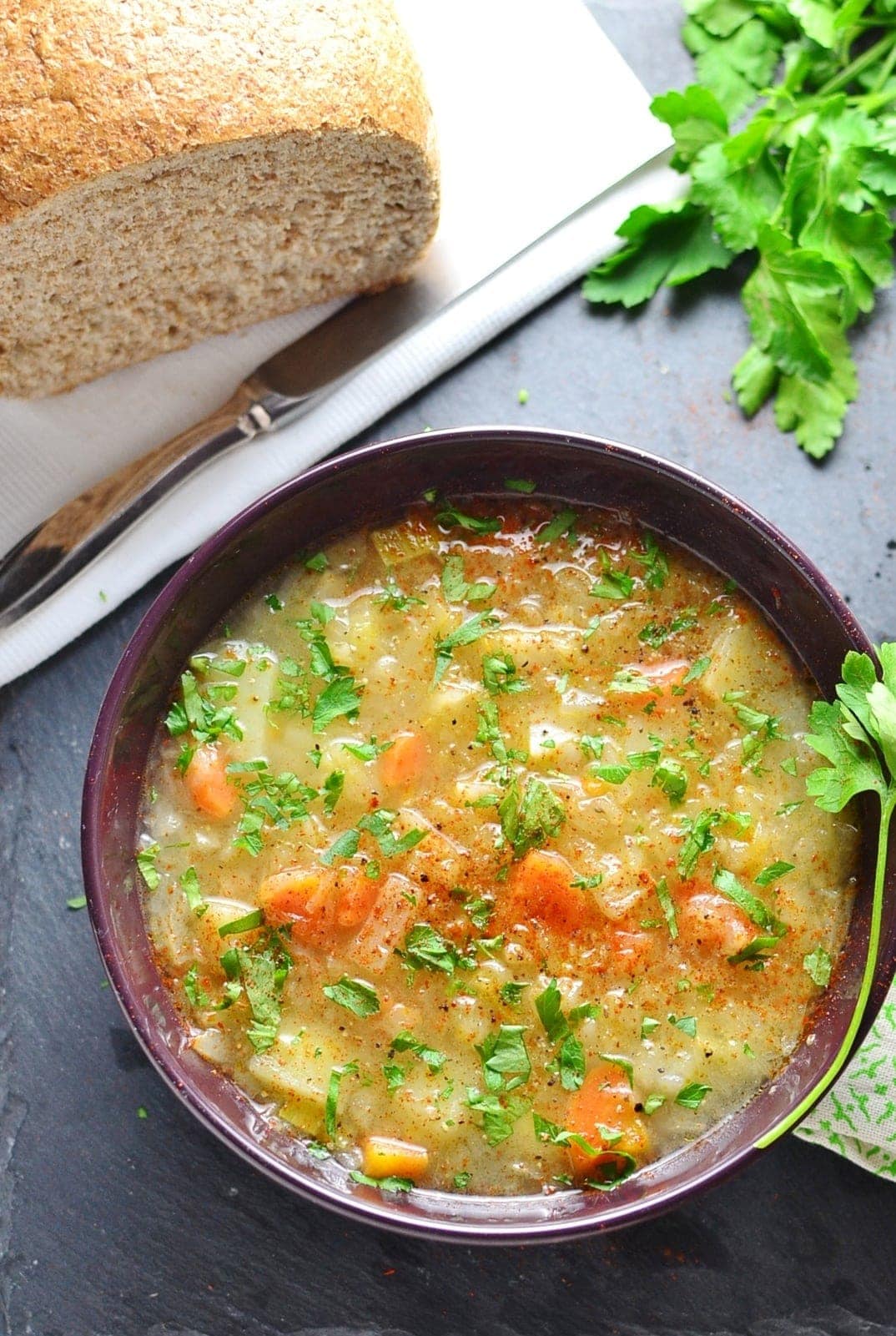
This sauerkraut soup is often made with smoked ribs, bacon, Polish kiełbasa and other meats, but can also be vegetarian.
Main dishes in Poland
Traditional Polish main dishes tend to either involve meat (most often pork, chicken, more recently, turkey, and occasionally beef) or dumplings, such as pierogi or kopytka (potato dumplings) and placki ziemniaczane (potato pancakes). They are typically served with either potatoes (unless the meal consists of mainly potatoes, as in dumplings etc), but also cooked buckwheat, barley, millet or other types of ‘kasza’, as well as some type of salad (see below) or a hot vegetable dish (such as buraczki).
Polish main meals are called ‘obiady’ (sing. ‘obiad’) and consist of 2 courses: soup followed by a main dish. They are usually served in the middle of the day, while the final meal of the day (kolacja in Polish), eaten around 7pm tends to be lighter and resemble breakfast (scrambled eggs might be replaced by egg salad at supper).
10. Kotlety schabowe - breaded pork cutlets.
These pork cutlets (‘schab’ means ‘pork’ in Polish) are pounded until thin, then breaded and fried in oil until crispy. For many years this was a staple food in Poland served in most homes. A variation of ‘schabowe’ (as they are colloquially called) are breaded chicken cutlets.
11. Kotlety mielone - ground meat patties.
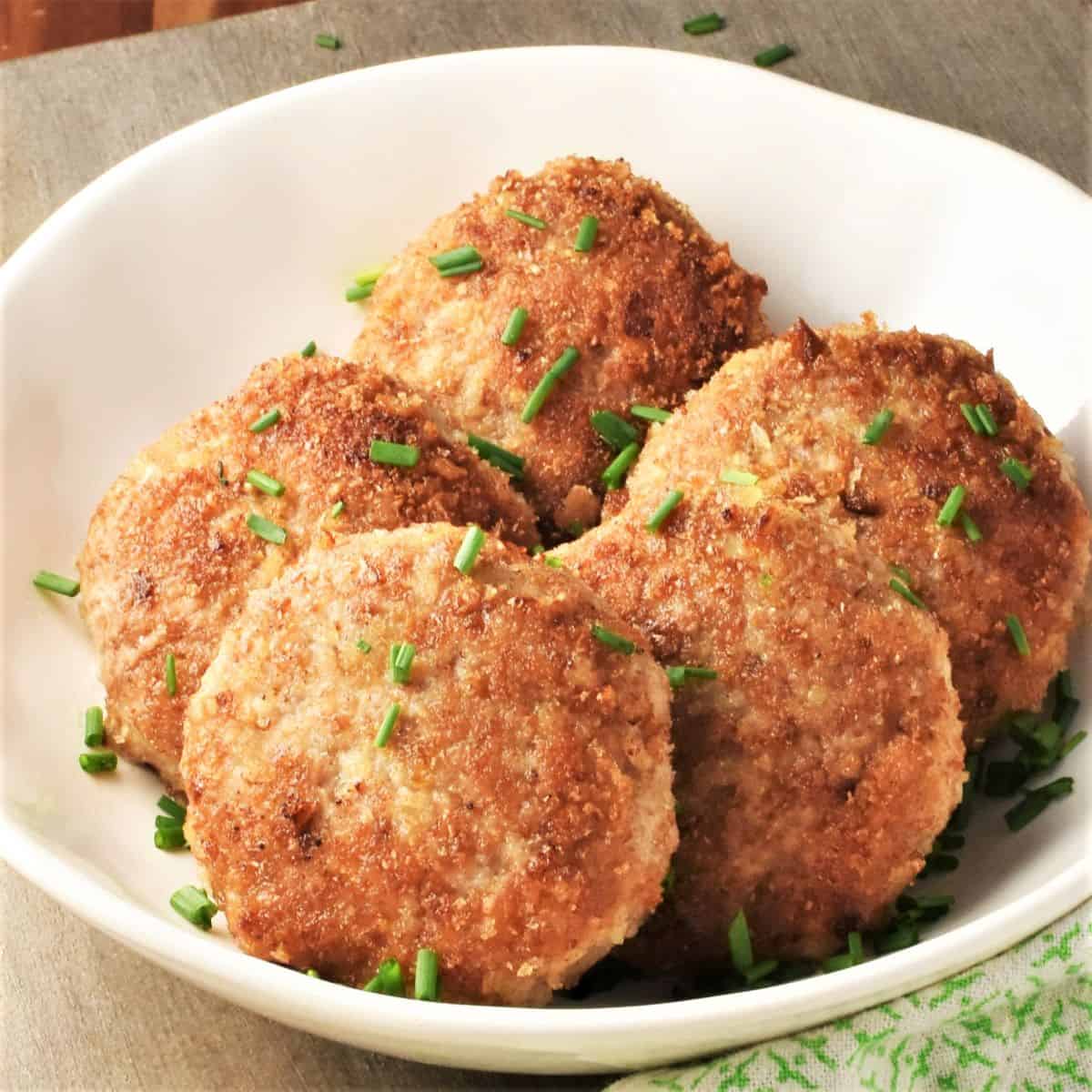
Traditional Polish kotlety mielone are one of the most popular simple everyday foods in Poland. These pan-fried ground meat patties are soft and succulent on the inside and crispy on the outside.
Variations include pulpety and klopsiki, which are meatballs cooked in various sauces.
12. Gulasz - goulash.
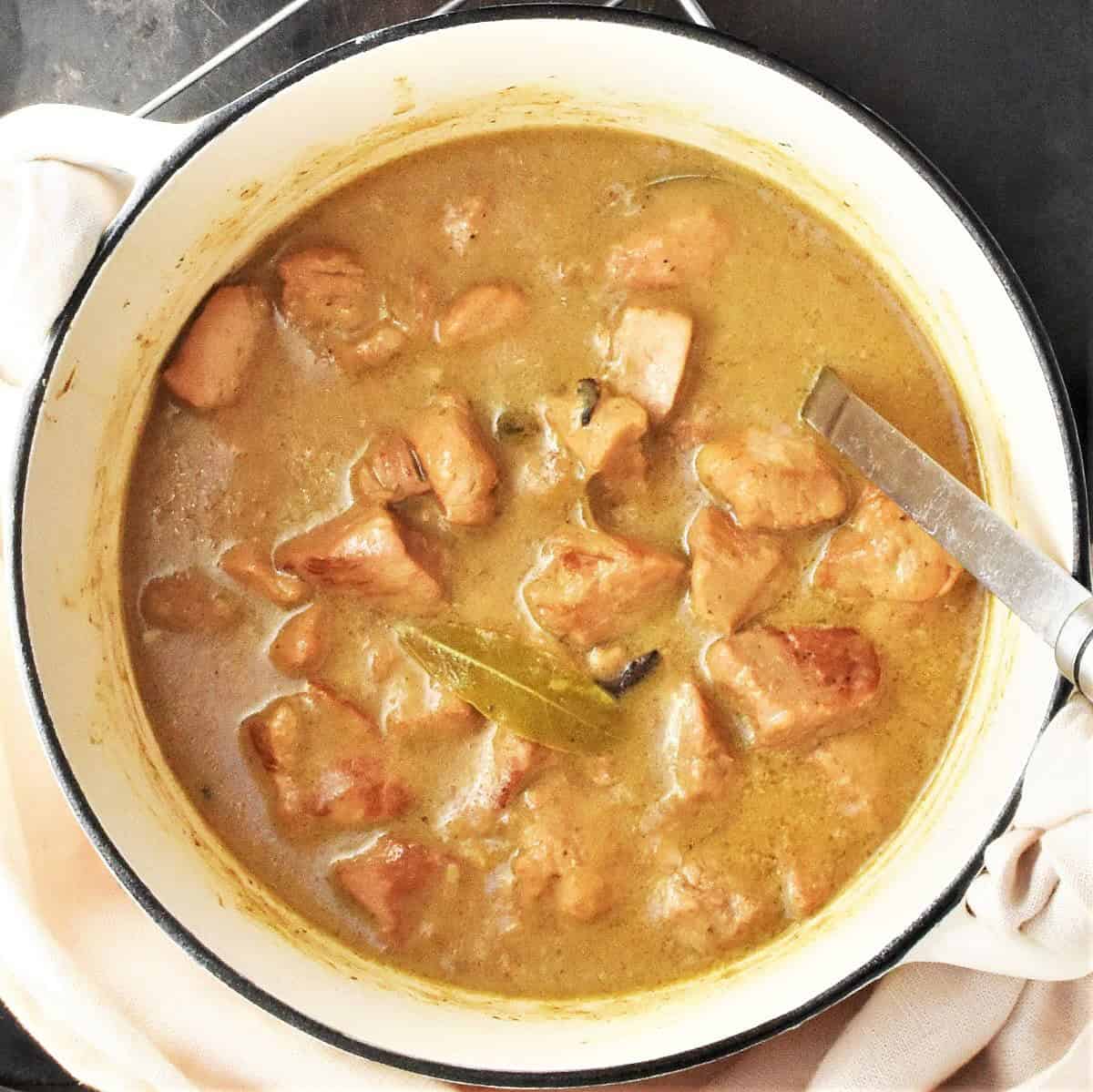
The name of this dish comes from Hungarian ‘gulyás’ (which is a soup made with meat, vegetables and paprika) and in Polish cuisine is a general term for stew, most often containing meat. Popular types of goulash in Poland are made with pork or beef, and sometimes chicken.
A similar style recipe are braised pork steaks.
Recipe for Polish pork goulash
Polish dumplings and pancakes
Potato and flour dishes are filling, inexpensive and delicious and Polish food has these in abundance. Most dumplings and pancakes in Poland have traditionally been served either as main or side dishes, both in private homes, school cafeterias as well as ‘bary mleczne' ('milk bars', popular communist-era eateries, today almost extinct).
13. Kopytka - Polish potato dumplings.
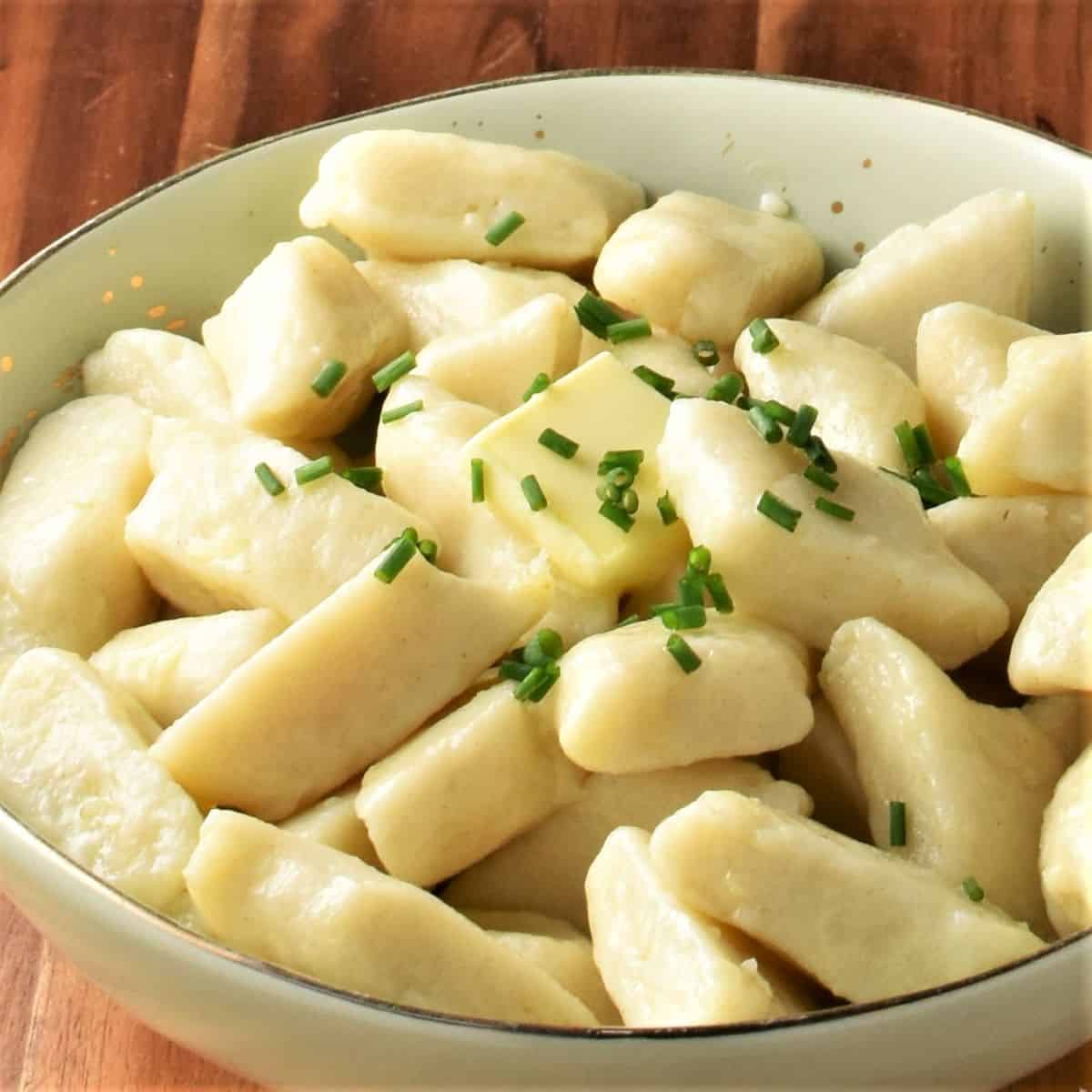
Polish traditional potato dumplings contain just 4 ingredients and are incredibly simple to make. They transform ordinary mashed potatoes into a truly delicious dish, perfect on its own or as a side dish with meat-based or vegetarian stews.
See also pierogi leniwe, which are essentially kopytka made with twaróg cheese.
14. Pierogi z kapustą - sauerkraut pierogi.
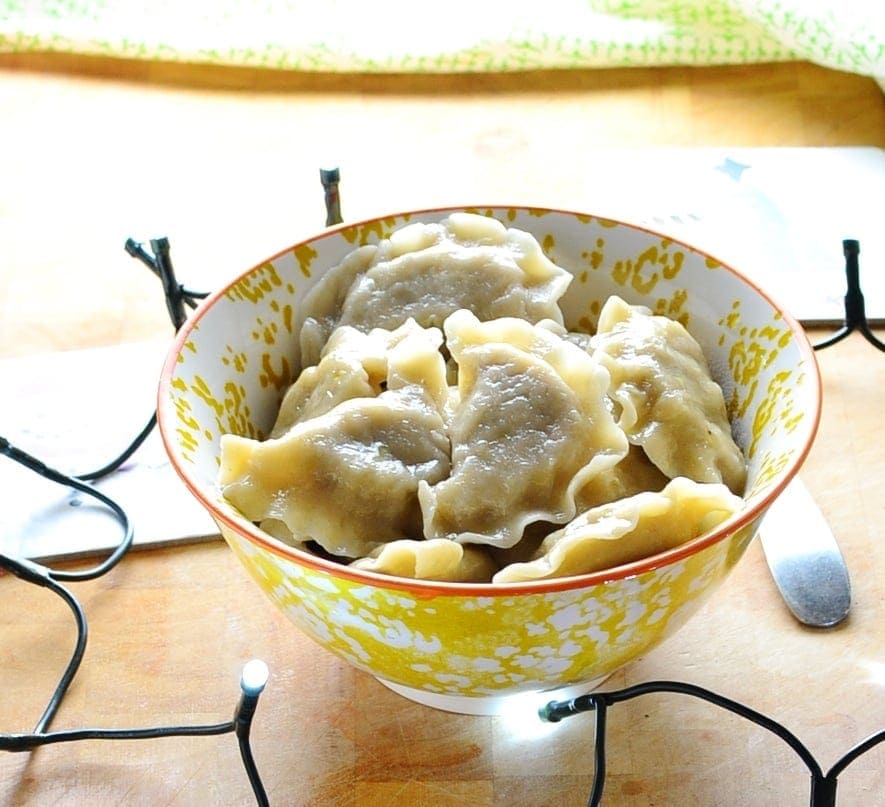
Sauerkraut pierogi are a Christmas Eve dinner staple in Poland but are also very popular throughout the year.
15. Placki ziemniaczane - potato pancakes.
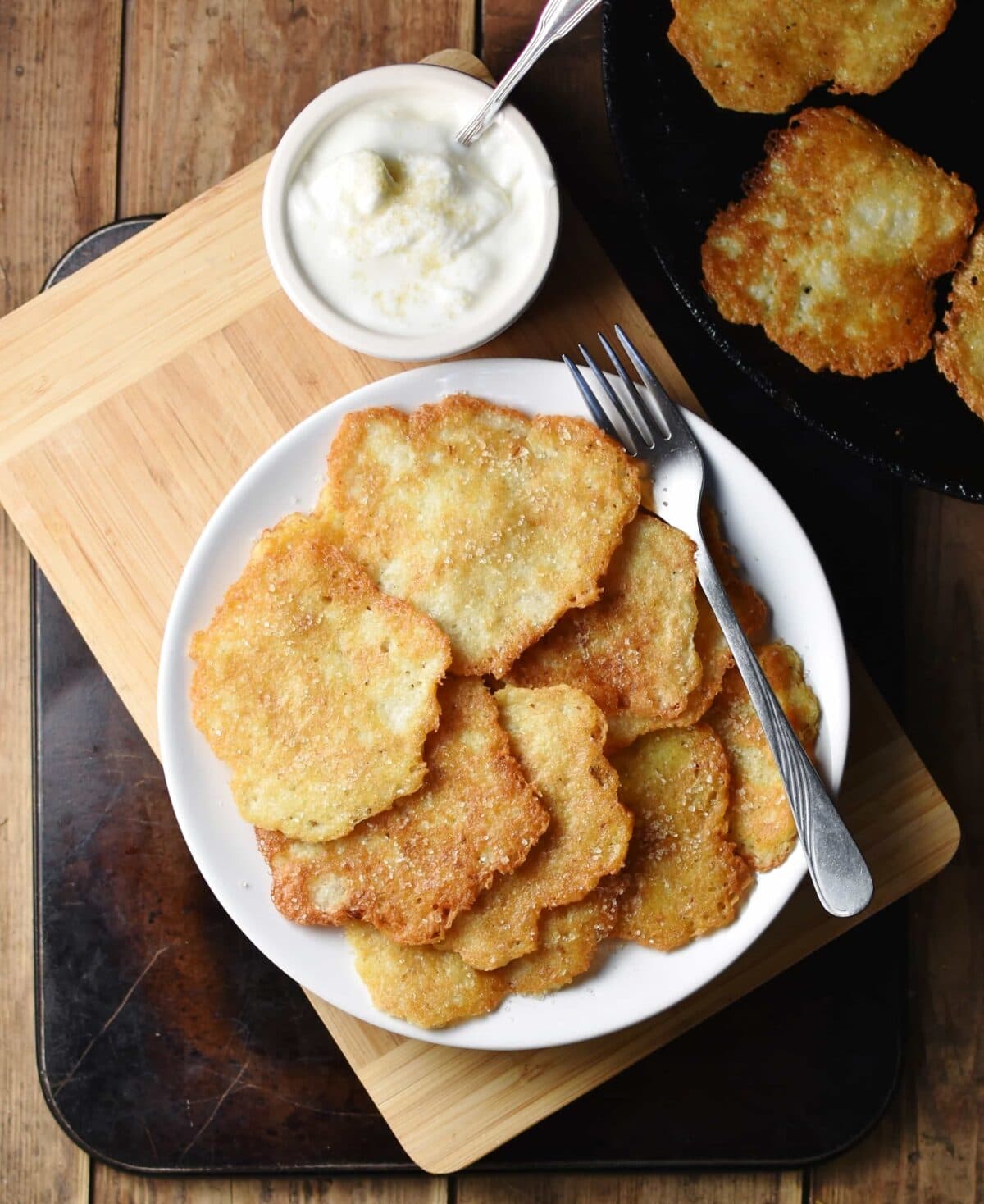
Polish potato pancakes, made using raw potatoes, are shallow fried until crispy on the outside and soft on the inside. They can be served either as a main meal, with sour cream (and sugar!) or as a side dish for goulash or mushroom sauce.
Recipe for Polish potato pancakes
16. Naleśniki - crepes.

Polish crepes with sweet twaróg filling are another main dish offering, which can also be served for ‘podwieczorek’ (a late afternoon snack) or even dessert!
17. Racuchy - pancakes.
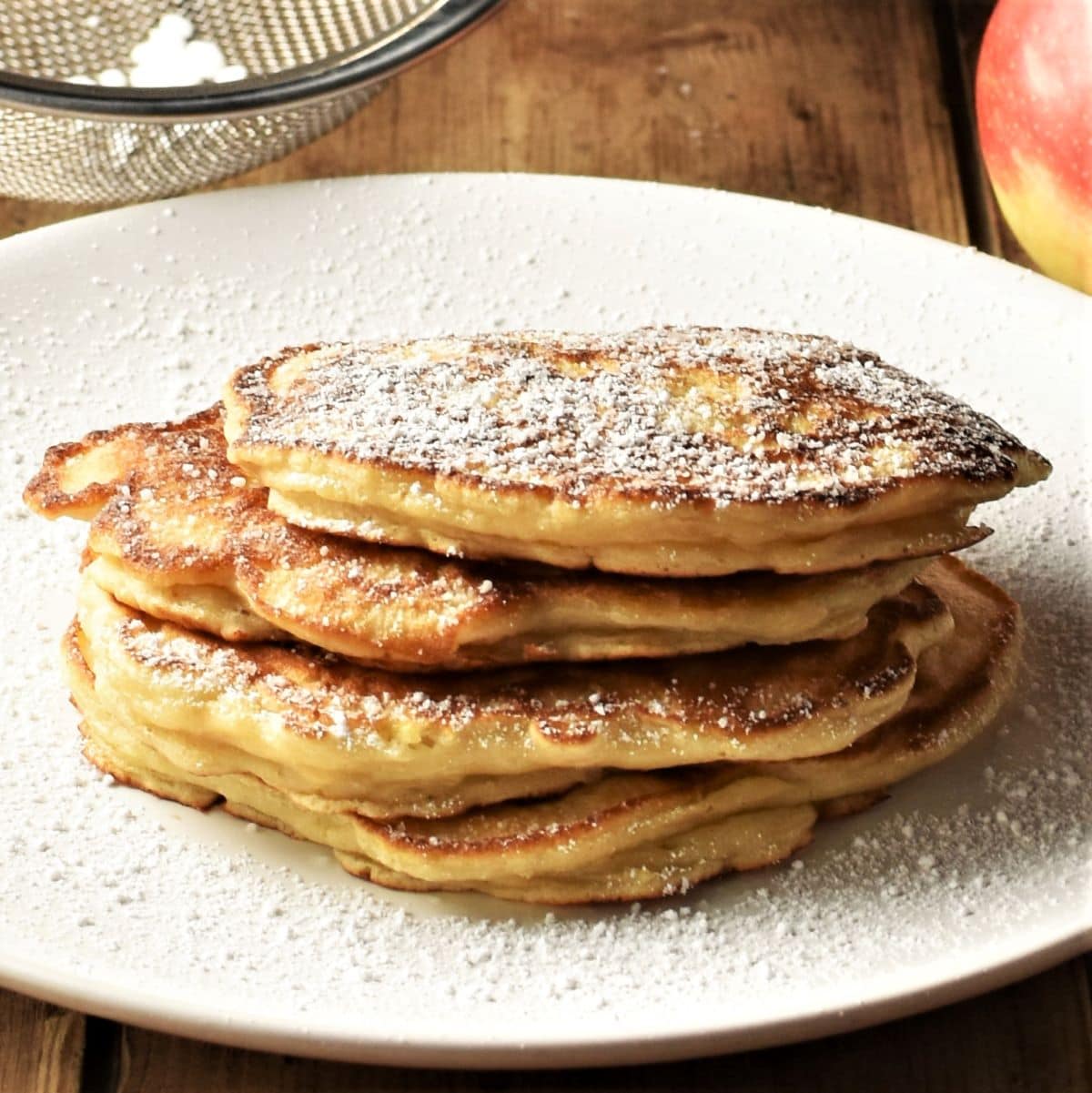
Polish pancakes can be made either with yeast or baking powder and often include apples. They are another example of podwieczorek/dessert.
Popular Polish salads
18. Sałatka jarzynowa - potato salad.
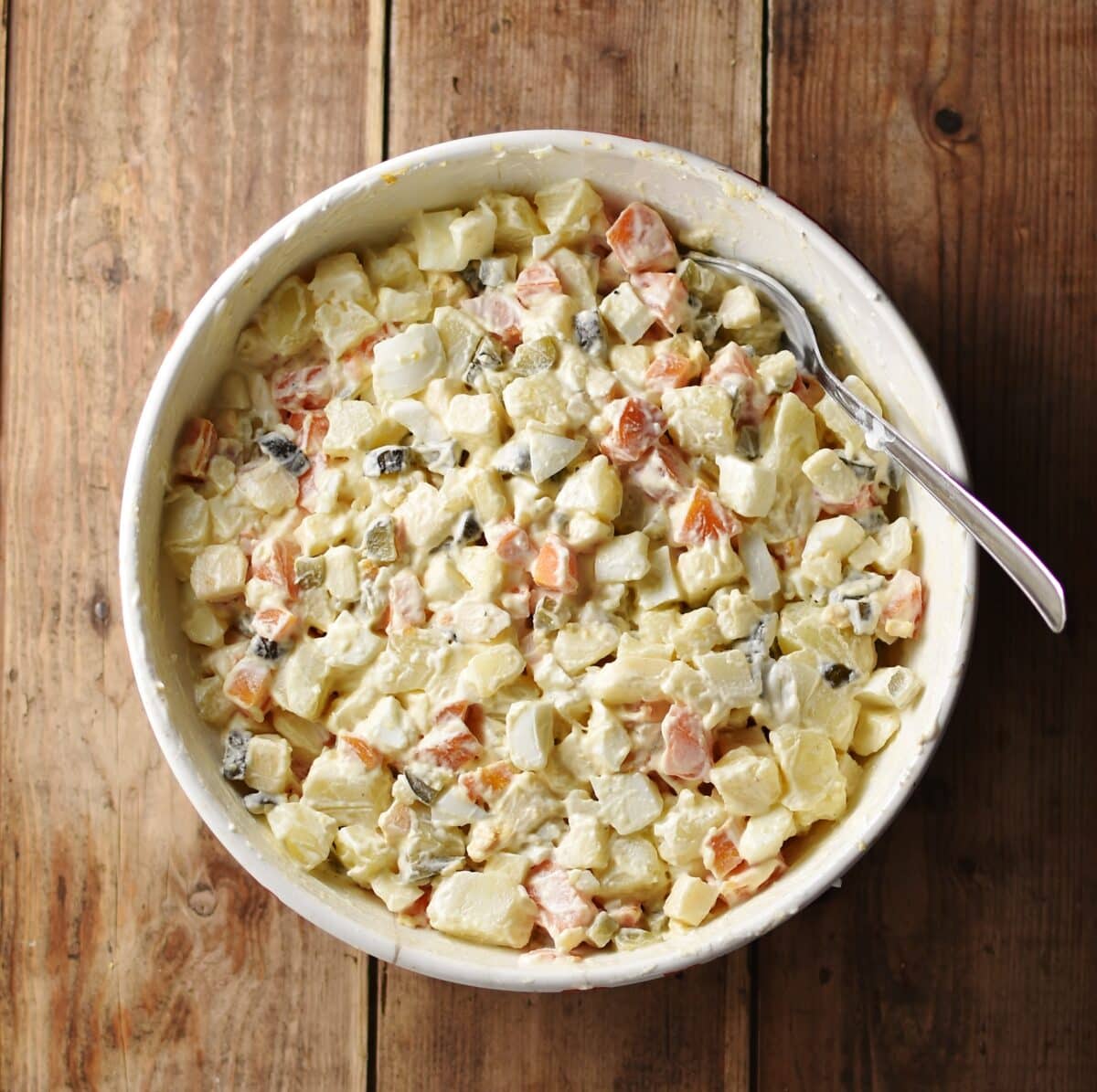
This is the most famous of all Polish salads, made with cooked root vegetables, eggs, dill pickles and mayonnaise (I also make mine with apples). It’s an ideal make-ahead party dish, perfect for feeding a crowd.
Recipe for Polish potato salad
19. Mizeria - cucumber salad.
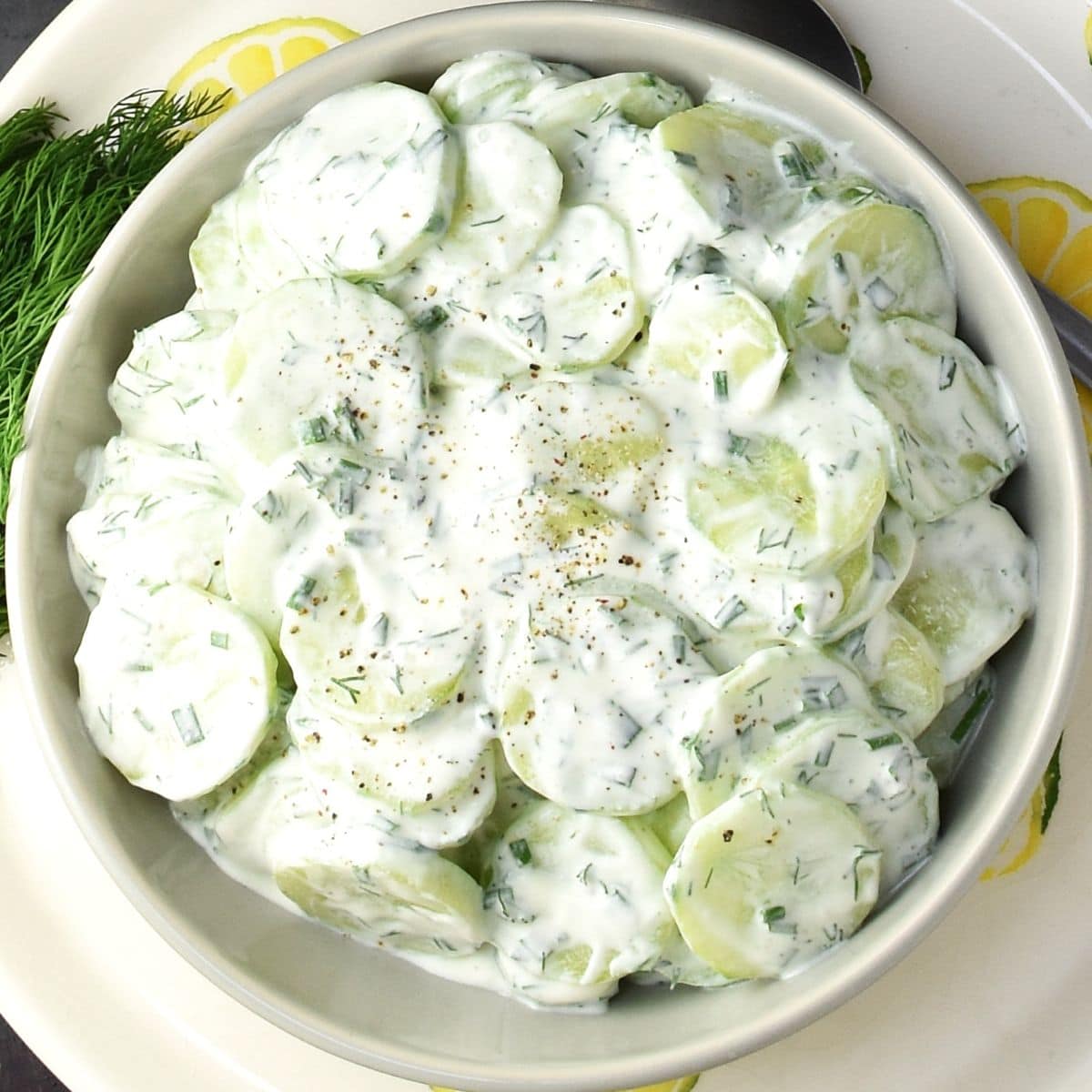
Polish cucumber salad consists of thinly sliced cucumber with fresh herbs and sour cream. Simple and quick to make, it’s one of my go-to salads whenever I make a Polish-style dinner.
20. Surówka - Polish slaw salad.
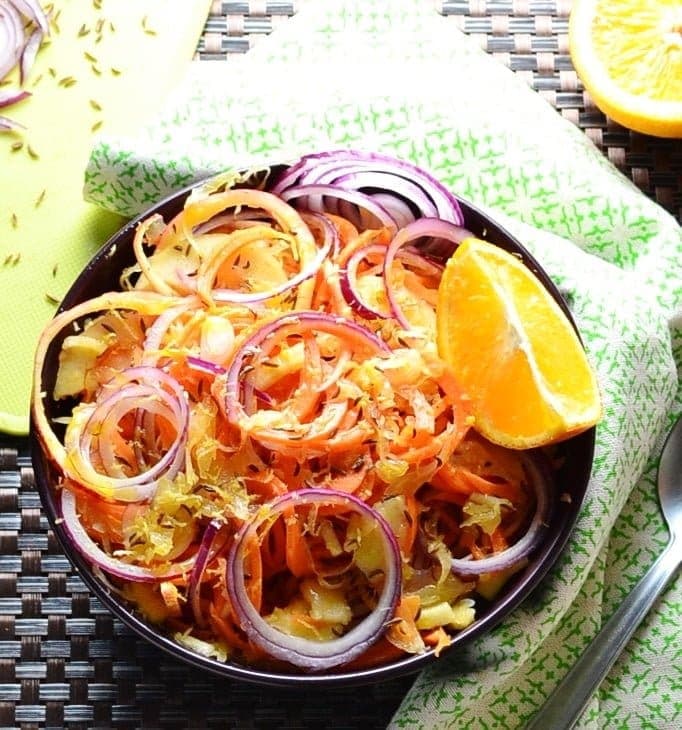
Derived from ‘surowy’, which means ‘raw’, 'surówka' is a general term used for coleslaw-style salads, which in Poland can be made with carrots, cabbage, sauerkraut, leeks, celeriac, apples, beets and other vegetables. The dressing typically contains either sour cream, mayonnaise or oil. Surówki (pl.) are extremely popular and served all year round using seasonal ingredients.
Traditional Polish appetizers/party foods
21. Śledź -herring.
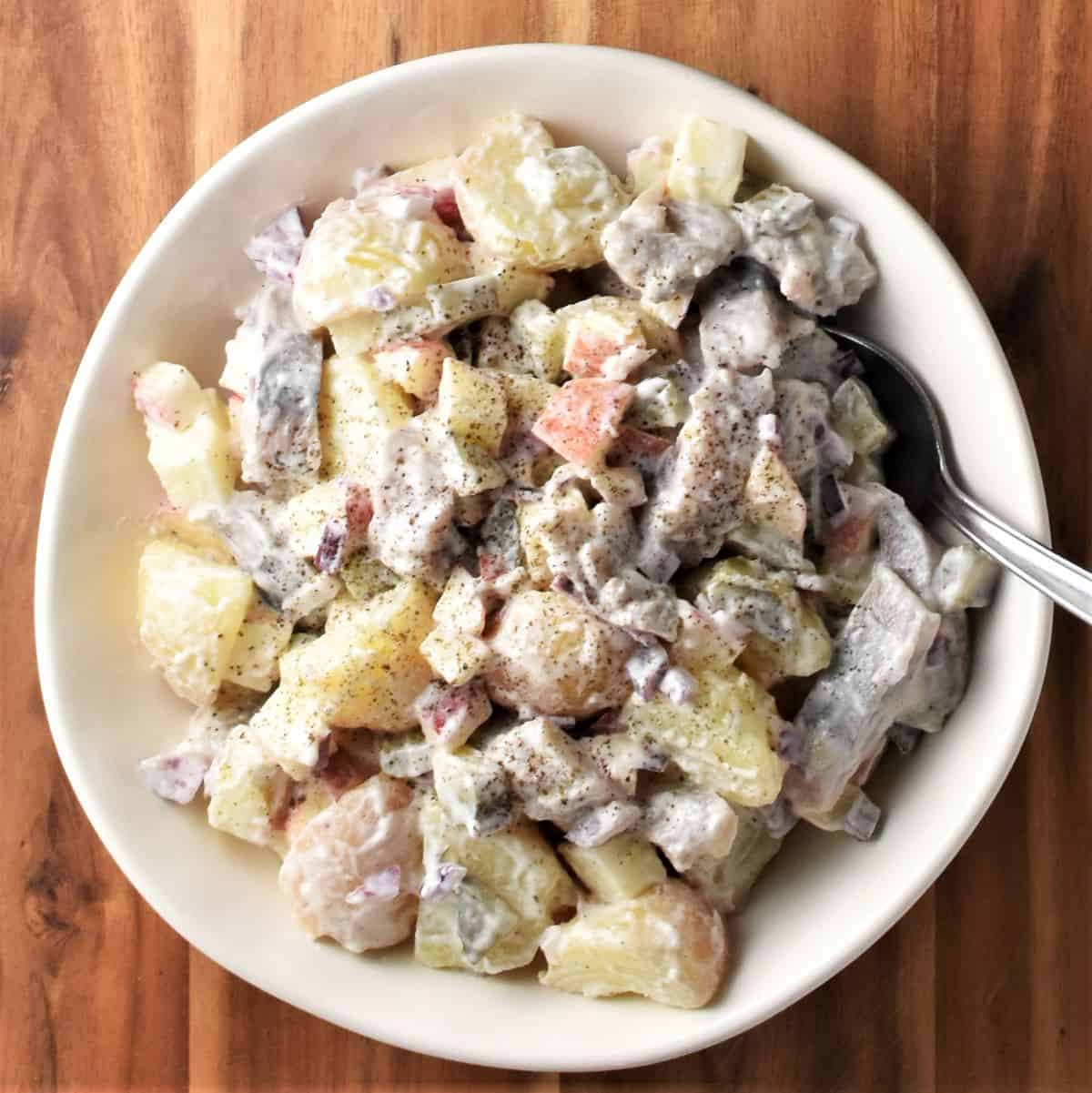
Traditionally Polish-style herring (‘śledź’) is usually eaten marinated rather than cooked. There are countless ways of serving marinated herring, the most popular being coated in sour cream or oil and onions. Herring can also be added to salads and other snacks and appetizers.
22. Galaretka z nóżek - meat jelly.

This appetizer consists of pieces of tender meat in a savoury jelly. It is typically served at family gatherings and celebrations but is often also enjoyed without a special occasion.
23. Zapiekanka.
The word ‘zapiekanka’ can be applied to any dish that involves baking, such as a savoury casserole or sweet rice and apple (though not cake). However, the most famous type of zapiekanka (Polish street food of sorts) consists of a long thin bread cut in half, topped with mushrooms and cheese then baked until the cheese melts.
Polish cakes and desserts
Classic Polish food is famous for its dumplings and other savoury dishes, but it also offers fantastic ‘sweet’ recipes including cakes and pastries. These are a few of the most popular ones:
24. Szarlotka - Polish apple cake.
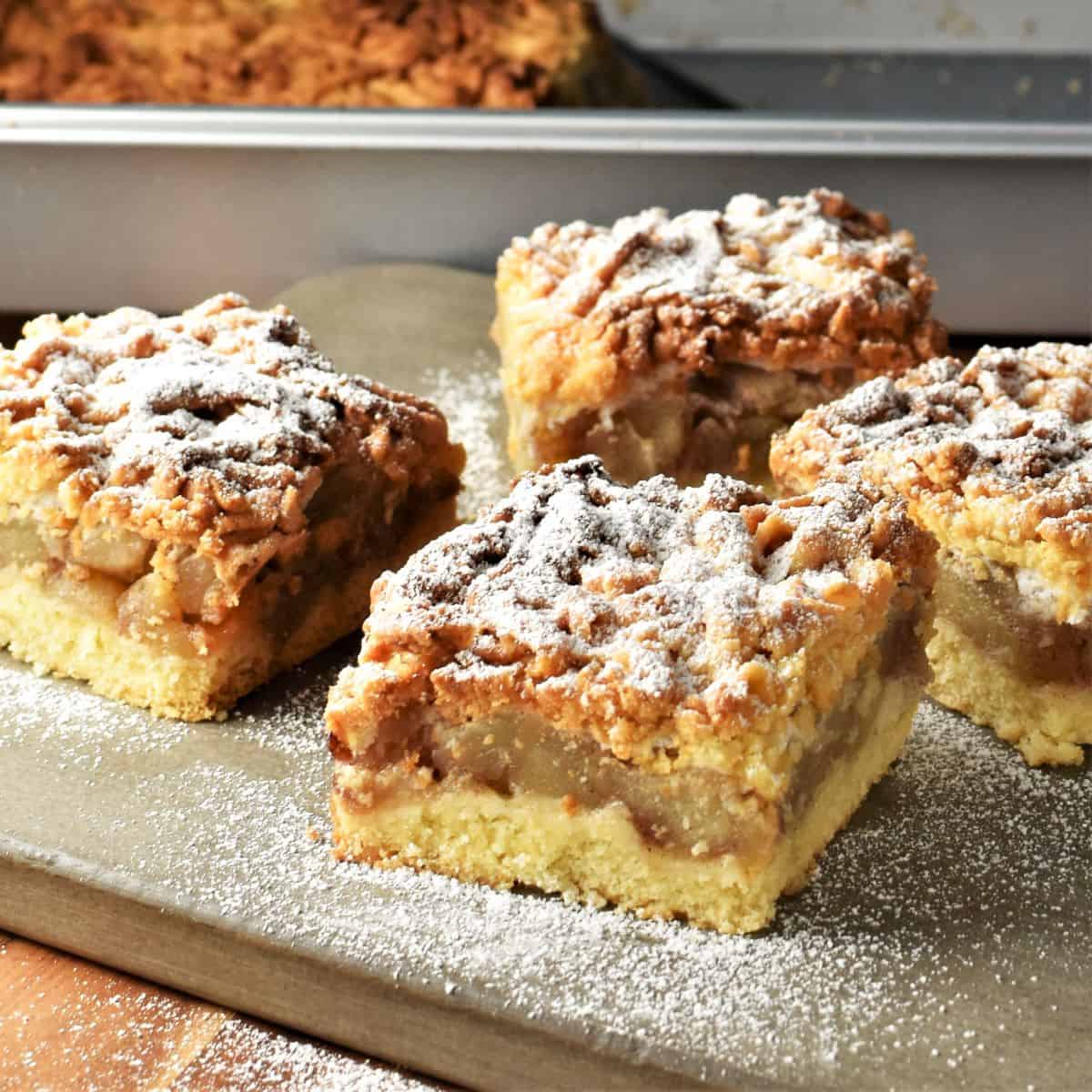
Szarlotka cake is packed full of delicious, juicy apples and comes with a crispy crumb topping. It is simple to make, not overly sweet and a delicious way to celebrate seasonal fruit.
Another type of apple cake popular in Poland is jabłecznik (unlike szarlotka, usually not made with short-crust pastry). You might also like pleśniak cake, which is similar to szarlotka.
25. Sernik - cheesecake.

Traditional Polish cheesecake is made using Polish twaróg cheese and an easy crust from scratch. It’s a little denser than classic baked cheesecake (made with cream cheese) though still creamy, delicious and easy to make.
26. Piernik - gingerbread cake.
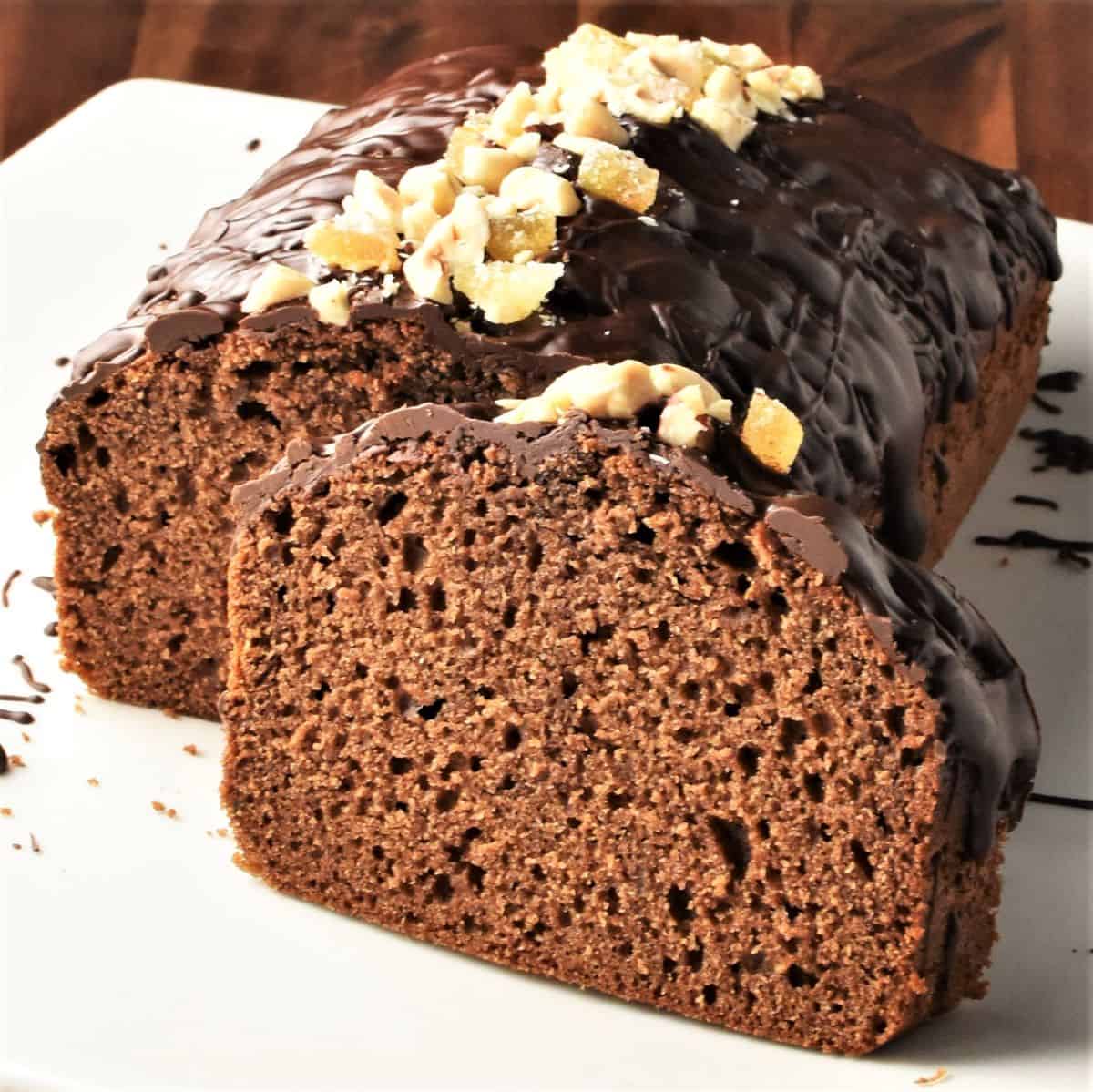
Polish gingerbread piernik is a deliciously spiced easy bake with honey. It can be made with or without a jam filling and topped with either sugar or chocolate glaze.
27. Tort - layered cake.
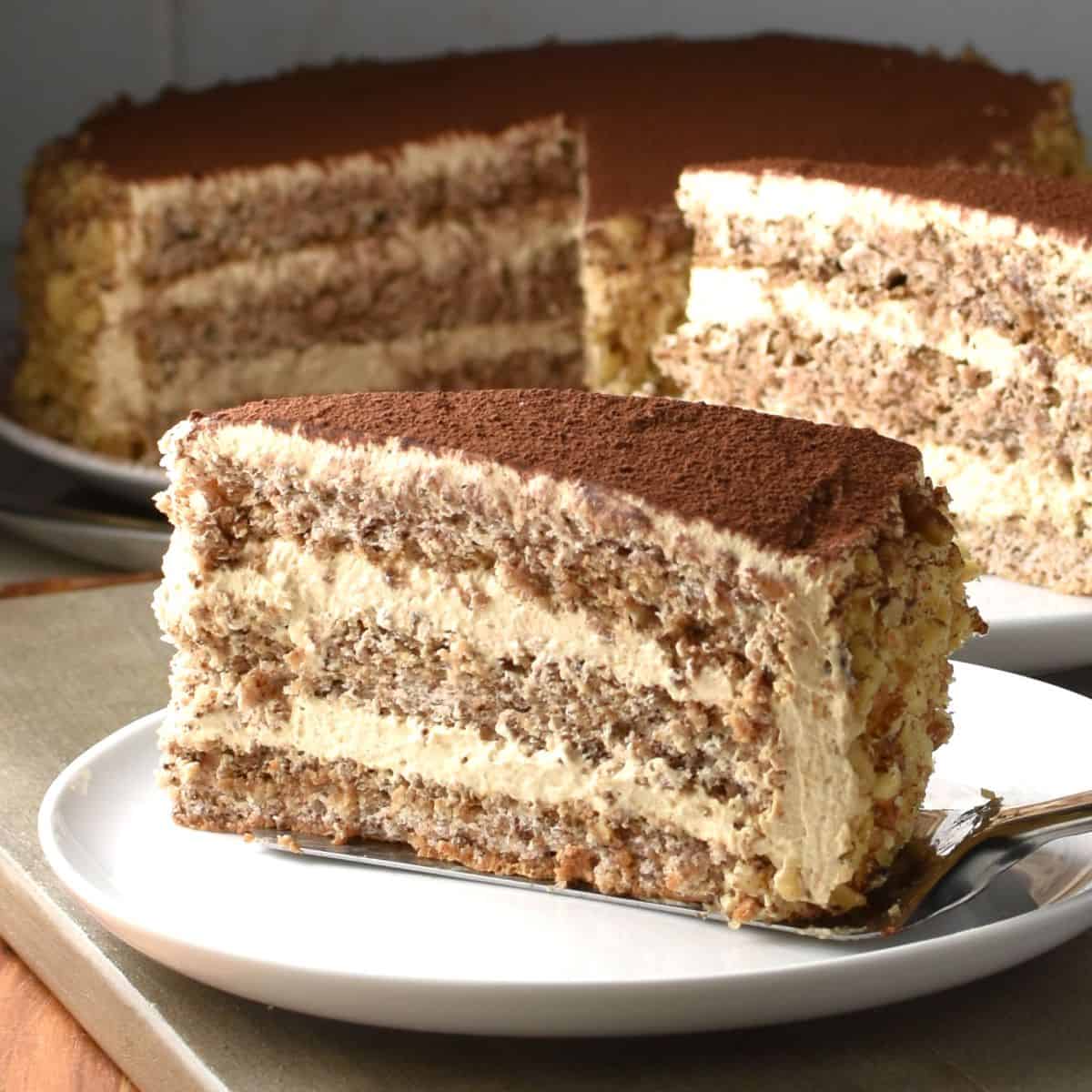
The most celebratory of all Polish cakes, tort consists of layers of creamy frosting and light sponge cake and can be made using many different flavours. Growing up I remember every birthday being celebrated with a spectacular tort skillfully put together by my mom.
28. Pączki - Polish donuts.
These are yeast leavened deep fried donuts with a jam filling, coated either in an orange glaze or powdered sugar. Pączki are available in all cukiernia pastry shops including famous Blikle in Warsaw, which sells exceptionally delicious pączki with rose jam filling (well worth visiting).
Herbs and spices used in classic Polish dishes
- Dill, chives and parsley: typically used fresh to garnish soups, salads and other dishes.
- Marjoram: the main herb in in żurek soup, tripe soup (flaczki) and many other dishes.
- Allspice and bay leaf: used in most soups as well as stews.
- Caraway seeds: these are often added to cabbage or sauerkraut dishes.
- Herbes de Provence: a popular herb mix in Polish cuisine.
- Cloves and nutmeg: used in gingerbread recipes but also added to savoury dishes.
- Lovage, savory and tarragon: add depth of flavour.
- Juniper berries: used in bigos.
Browse ALL my Polish recipes for more traditional East European cooking inspiration!
Keep in touch!
What are your favourite traditional Polish foods? Have I included them in my list? Let me know in the comments below, thanks:)
Follow me on Facebook, Instagram and X for regular recipe updates! Or you could subscribe to this blog and receive all my latest recipes right into your mailbox!

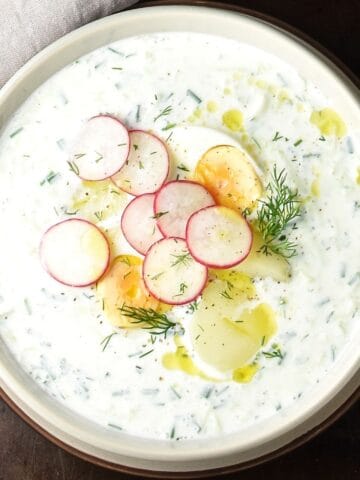
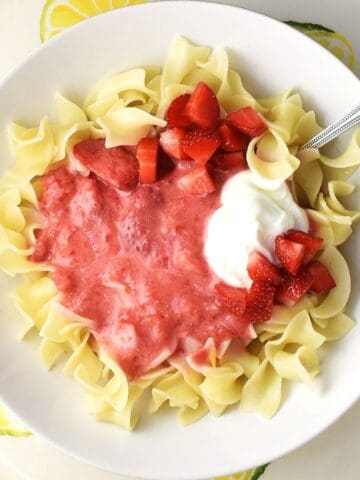
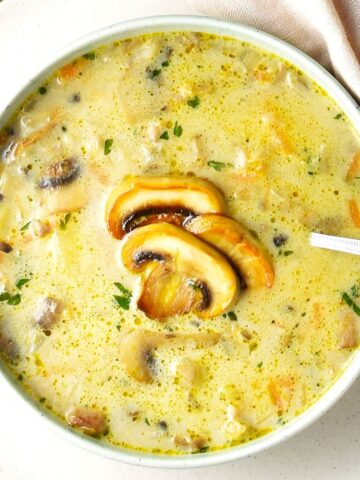
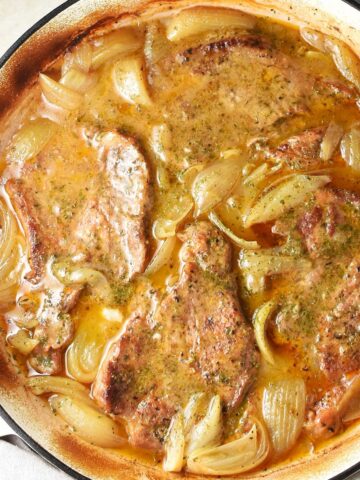
Eva says
I'm so glad I've found your website.
I miss my Mum's cooking and am just waiting for my Szarlotka to finish baking.
I didn't see a recipe for Babka which I'm keen to try. I will definitely try some of the recipes in the near future. Dzięki.
Monika says
You are welcome! I hope the szarlotka was a success:)